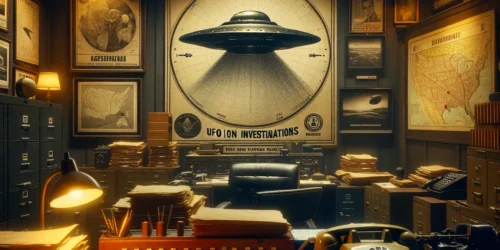Advanced Aerospace Weapons Systems Application Program (AAWSAP)

The Advanced Aerospace Weapons Systems Application Program (AAWSAP) was a U.S. government-funded program that ran from 2007 to 2012, led by the Defense Intelligence Agency (DIA) in collaboration with other government agencies and private contractors. The program focused on researching advanced aerospace technologies that could have national security implications, including propulsion systems, materials science, and human interface technologies. However, one of the most notable aspects of AAWSAP was its investigation into Unidentified Aerial Phenomena (UAPs), commonly referred to as UFOs.
According to publicly available documents and statements from former government officials, AAWSAP allocated a small portion of its budget towards investigating UAP sightings, along with other potential aerospace threats. It is believed that some of its research findings may have been shared with the better-known Advanced Aerospace Threat Identification Program (AATIP), which was established in 2007 and focused specifically on UAPs.
Facts about AAWSAP include:
- AAWSAP was not initially intended to study UAPs. According to a 2018 report by Politico, the program was primarily established to research advanced aerospace technologies that could potentially be weaponized by other countries, such as hypersonic missiles and space-based weapons. However, as part of its broader focus on aerospace threats, AAWSAP also allocated some of its resources towards investigating UAP sightings.
- AAWSAP’s UAP-related activities remain largely classified. While some information about AAWSAP’s broader research activities has been publicly released, including details about its partnerships with private contractors and research on advanced aerospace materials, very little is known about its specific UAP investigations. This has led to speculation and debate within the UFO community about what AAWSAP may have discovered and whether its findings have been shared with the public or other government agencies.
- Some former government officials have claimed that AAWSAP’s UAP investigations were taken seriously and yielded intriguing results. In a 2019 interview with Popular Mechanics, former AAWSAP contractor Eric Davis stated that he had briefed senior government officials on “extremely compelling” UAP sightings that could not be explained by known technology. Other former officials, including Luis Elizondo, who led AATIP, have similarly suggested that UAPs pose legitimate national security concerns and that the government should take them seriously.
AAWSAP and its UAP-related activities have been the subject of significant interest and debate within the UFO community. Some experts, including former government officials like Elizondo, have argued that UAPs represent a genuine and scientifically worthy area of study that has been unfairly marginalized and ridiculed by mainstream science and the media. They argue that AAWSAP and AATIP represent important steps towards acknowledging the reality and potential significance of UAP sightings, and that more research and transparency is needed.
As for books and other sources, there have been a number of publications and media reports on AAWSAP and related topics. For example, journalist Leslie Kean’s 2017 book “UFOs: Generals, Pilots, and Government Officials Go on the Record” includes an interview with former AAWSAP contractor Eric Davis, in which he discusses some of his experiences and findings related to UAPs. Meanwhile, media outlets like the New York Times and Washington Post have published multiple articles on AAWSAP and related topics, including interviews with government officials and experts. These articles have generally presented a range of viewpoints and have attempted to provide context and analysis for readers.
The program and its UAP-related activities remain largely classified, but some former government officials and experts have suggested that its findings were intriguing and worthy of further study.



